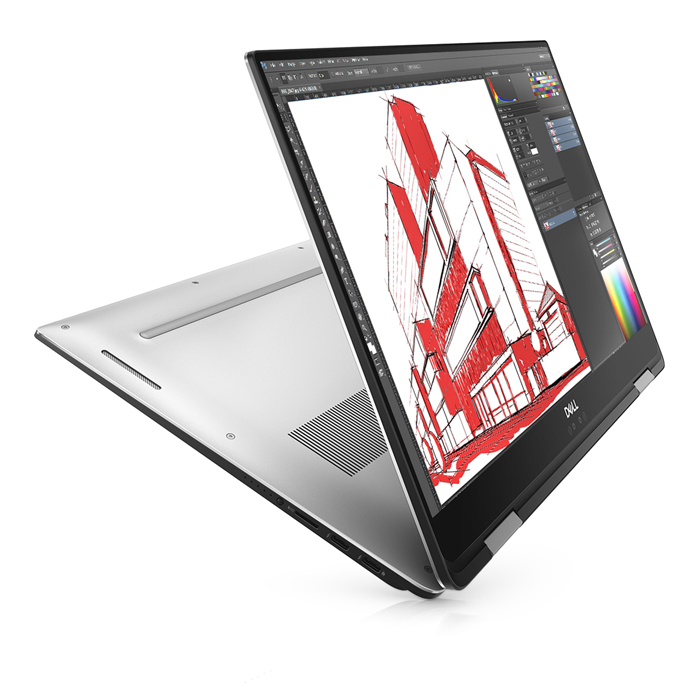Dell has produced an exceptional machine that offers the power of a mobile workstation and the flexibility of a Wacom pen-powered tablet. The cherry on the top is that it’s also incredibly thin
The mobile workstation 2-in-1, a laptop that doubles up as a tablet, is a relatively new invention, dating back to 2016 and the launch of the Lenovo ThinkPad P40 Yoga.
Lenovo’s flexible Yoga workstation has since been discontinued, leaving HP to take up the mantle with two 2-in-1s: the HP ZBook x2, which is essentially a tablet with a detachable keyboard; and the HP ZBook x360, a laptop with a 360-degree hinge, so the screen can fold back on itself and turn into a tablet.
In the AEC sector, such devices allow architects to start their creative process with a sketch, then continue to develop the design in 3D without having to change devices. The pen and touch-enabled tablet can also be used for marking up drawings or models, or for a more relaxed way to browse documents and websites.

Now, Dell has got in on the act with the Precision 5530 2-in-1. It’s similar to the HP ZBook x360 insofar as it has a 360-degree hinge and features Wacom pen technology. However, it’s notably smaller and lighter.
It’s the slenderness of the 5530 2-in-1 that really catches the eye, as it’s a mere 9mm at the front and 16mm at the rear. This is quite incredible for any mobile workstation, let alone one that has a touch and pen-enabled display powered by Wacom technology.
The secret to this incredibly thin machine is the processor, which is the result of an unlikely collaboration between Intel and its rival AMD.
Most mobile workstations feature an Intel CPU with a discrete GPU (either Nvidia Quadro or AMD Radeon Pro). The Intel ‘Kaby Lake G’ processor in Dell’s 2-in-1 is different, in that it combines an Intel CPU with an AMD Radeon Pro GPU on a single piece of silicon. This reduces the physical size and depth of the chip and means Dell’s 2-in-1 can be significantly thinner than an equivalent mobile workstation with a fully independent CPU and GPU.
The 5530 2-in-1 is so thin that it doesn’t have space for any USB Type-A ports (only USB Type-C) nor an RJ-45 Ethernet port. Dell includes one USB Type-C to USB Type-A ada\pter and one USB Type-C to RJ45 adapter in the box.
There are four USB Type-C ports in total, which can perform multiple roles. The two on the right side of the machine are USB-C 3.1 and the two on the left are Thunderbolt 3, which is great for connecting up fast external storage or an external GPU.
All four ports support DisplayPort, so you can hook the machine up to an external display. All four can also be used for charging with the included slimline 130w Power Adapter.
With only four multipurpose ports, you can quickly run out, but the simplicity of this approach is great and you can always buy a USB hub. It’s also nice to have the flexibility to place your power cable left or right, so it’s always on the side of the plug socket.
The ‘MagLev’ keyboard design also helps reduce the thickness of the machine. MagLev, derived from magnetic levitation, uses magnets instead of rubber domes to get the keys to bounce back. Typing feels a bit weird to begin with, as the keys have a bit less travel, but you soon get used to it.
The soft-touch keyboard deck shows off the carbon fibre weave construction. It looks great, but is a little prone to fingerprint marks. The glass surface touchpad feels a tiny bit slippy to begin with, but you soon adjust.
The 15.6” UltraSharp IGZO4 4K (3,840 x 2,160) Infinity edge display is one of the best we’ve ever seen on a mobile workstation. The display is bright, CAD models look incredibly sharp and colours are very vivid. With a very thin border, the screen also goes very close to the edge of the panel. As a result, it feels much smaller than a typical 15.6-inch mobile workstation. As the panel has touch and Wacom pen technology built in, it’s a little bit thicker than a normal display, but this goes unnoticed as the main body of the machine is so slender.
Dell’s 2-in-1 comes with a HD (720p) webcam and Windows Hello infrared camera, which can be used instead of a password to log into Windows or for other types of authentication. Going against tradition, the camera is at the bottom of the screen, rather than the top, which isn’t always the most flattering angle for video calls. There is also an optional fingerprint reader that is built into the power button.
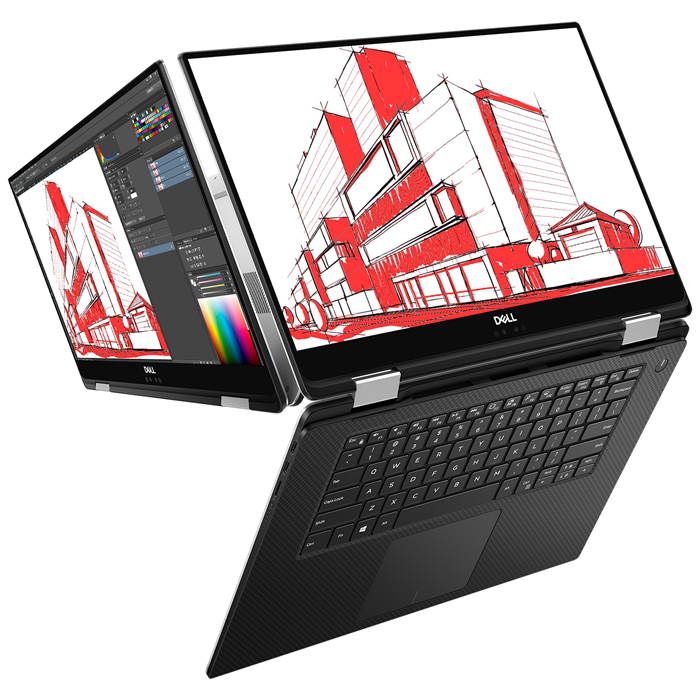
The machine is currently available with a choice of two processors: the Intel Core i5-8305G (4 cores, 8 threads, 2.80GHz, 3.80GHz Turbo); and the Intel Core i7-8706G (4 cores, 8 threads, 3.10GHz, 4.10GHz Turbo). Both feature Radeon Pro WX Vega M GL discrete graphics with 4GB of HBM2 memory and Intel HD Graphics 630. The 5530 2-in-1 switches between the two, depending on how demanding the 3D task might be.
Switching worked fine with key applications like Revit, SolidWorks and Autodesk VRED. However, with some of our real-time rendering tests, it chose to go with low powered Intel graphics instead, and we had to go into the Radeon Pro driver to manually assign the executable to the AMD GPU. We couldn’t get this to work with an executable created in AEC viz tool Enscape.
Our machine came with 16GB of 2400MHz DDR4 memory, which should really be considered a minimum for 3D CAD. Frustratingly, memory can’t be upgraded as it’s soldered on and 16GB is currently the maximum you can configure on dell.co.uk. We understand 32GB systems will be available soon.
Storage is standard fare for a machine like this – a single NVMe SSD. Our test unit came with the 1TB model, but there’s a choice of capacities from 128GB all the way up to 2TB. Not surprisingly for a machine this thin, there’s no 2.5-inch drive, so kitting it out with high-capacity storage is expensive.
The machine features Intel 8265 802.11ac wireless with Blue-tooth 4.1 as standard.
The 6-Cell 75WHr integrated battery is OK, but battery life is significantly shorter than the ZBook 15u G5, which has a 15W CPU. It lasted 2h 9 mins in the demanding PCMark 8 ‘Creative’ (OpenCL) battery test which uses both the CPU and GPU quite heavily. We’d expect it to last significantly longer with mixed office tasks. In fact, Dell reckons you can get up to 15 hours of battery life out of it, although we expect this is with very light workflows and a FHD display, which is more power-efficient. The battery took 59 mins to charge from 0 to 50%, which is not that fast compared to the HP ZBook 15u. To go from 0 to 100% took 2h 19mins.
Tablet mode
With a flexible 360-degree hinge, the Precision 5530 2-in-1 can be used in laptop, tent or tablet modes. Windows can be setup to automatically switch to tablet mode as soon as you pull the screen back on itself. This disables the keys and trackpad and generally makes Windows more touch-friendly.
As a laptop, the Precision 5530 2-in-1 is considered slim and light, but as a 15.6-inch tablet it feels quite heavy and cumbersome. Holding it in one hand is possible, but it’s hard to get a decent grip because of the keyboard and trackpad on the back. In short, it’s much better when rested on your lap; this way, you also achieve a more natural position for sketching.
The Dell Premium Active Pen (PN579X) does not come with the base machine and costs around £80 Ex VAT. It’s a really good size and weight and feels nice in the hand. The pen is round, but slightly flat on one side with a magnet inside, which allows it to be stuck firmly to the side of the tablet. On the other side of the pen, there’s a barrel button and a second button on top. The pen includes all the Wacom goodness, with 4,096 different levels of pressure sensitivity. It’s powered by a single AAAA battery.
The digital pen worked straight out of the box with Autodesk SketchBook, responding to tilt and pressure when selecting the appropriate pen type. But to get the most out of it, you need to download the Dell Active Pen Control panel software which lets you customise the buttons for things like keystrokes and erase. Capturing keystrokes is really useful for programming application shortcuts. For example, in Autodesk SketchBook, assign the letter ‘b’ to one of the pen’s buttons so you can quickly change brush size.
The top button can recognise single press, double press and long press. You can also set up one button to invoke a radial on-screen menu to get access to eight more configurable options, so there’s plenty of scope for customisation. Pen tip and tilt sensitivity can also be controlled through the software.
As far as we could tell, there’s no way to save profiles, which is shame as this would be useful for teams or for quickly setting up the pen for different applications/workflows.
The 3D CAD laptop
When running 3D CAD in laptop mode, the Dell Precision 5530 2-in-1 performed well. With our SolidWorks IGES export test, which uses a single CPU core, it was only a touch slower than a fast desktop workstation. The machine’s Intel Core i7-8706G CPU maintained a high clock speed of 4.0GHz throughout.
As the CPU only has four cores, the 5530 2-in-1 is not as fast at rendering as other mobile workstations that can offer CPUs with up to six cores. In our KeyShot and V-Ray rendering tests, for example, it completed our tests in 711 secs and 156 secs respectively. This was notably slower than the ThinkPad P1, which has a six-core Intel Xeon E-2176M and took 582 secs and 125 secs respectively.
If rendering is an important part of your workflow, but you also want the functionality of a 2-in-1, the HP ZBook x360 can be configured with quad-core or six-core CPUs. In fact, the top-end six-core Intel Xeon E 2186M should also give it a performance advantage in single-threaded workflows, as it has a Turbo of 4.8GHz.
We tested the 5530 2-in-1 for over an hour, rendering a scene in KeyShot and frequency hovered around 3.3GHz – 3.4GHz, a little bit above the base 3.1GHz. Impressively, the machine remained very quiet throughout. The fans did get louder when using the GPU at the same time in a game engine visualisation application, but this is really pushing the machine beyond how it would usually be used. With a typical 3D CAD workflow where the GPU is used in fits and starts to reposition a model on screen, fan noise remained relatively low, even when all four CPU cores were being used to render in the background.
From our 3D graphics tests, the Radeon Pro WX Vega M GL looks to be well-suited to mainstream 3D CAD. In SolidWorks 2019 it was significantly faster than the HP ZBook 15u G5, which has a Radeon Pro WX 3100 GPU, but slower than the Lenovo ThinkPad P1, which has an Nvidia Quadro P2000 (Max Q Design).
The Radeon Pro GPU starts to show its limitations in more demanding 3D applications, especially at 4K resolution, which has a big impact on 3D performance. It would do a job for real-time visualisation, but you’d probably need to dial down the resolution and quality a bit.
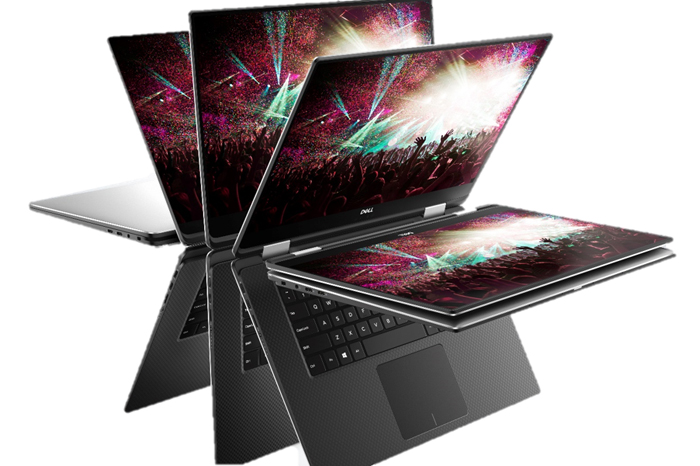
Conclusion
The Dell Precision 5530 2-in-1 is an exceptional machine that offers the power of a mobile workstation and the flexibility of a tablet. It’s wonderfully slim, the build quality is superb and the 4K panel is one of the best we’ve ever seen. The combination of quad-core processor and Radeon Pro graphics works well for CAD-centric workflows and thermal management is impressive, with fans that are notably quiet for a laptop this thin.
There are some minor downsides. The memory is currently limited to 16GB. While this is a good starting point for CAD, it doesn’t give you much room to grow in the future. Normally this isn’t too much of an issue, as you can add memory later if workflows change or applications become more memory-hungry. However, this isn’t possible with the 5530 2-in-1 as the memory is soldered on. We are told 32GB systems are coming.
Also, as one might expect, a machine like this doesn’t come cheap. Our test unit comes in at a substantial £2,641 Ex VAT. You can save £330 by going for a 256GB SSD instead of 1TB, and another £235 by going for a FHD display instead of the 4K.
It’s a considerable investment whichever way you cut it, but if you want a single machine that can support your creative process from concept all the way to detailed design, at the office or on the road, then it looks like money very well spent.
Price £2,641 Ex VAT
Specifications
■ Intel Core i7-8706G processor (4 cores, 8 threads) (3.1GHz, 4.1GHz Turbo) with Radeon Pro WX Vega M GL graphics (4GB HBM2 memory)
■ 16GB DDR4-2400MHz memory
■ 1TB M.2 PCIe NVMe Class 40 SSD
■ 15.6” UltraSharp UHD IGZO4 (3,840 x 2,160) Touch Wide View LED-
■ 354 (w) x 235 (d) x 9-16mm (h)
■ From 2.00kg
■ Microsoft Windows 10 Pro 64
■ 1 year Basic Onsite Service (Minimum Warranty), 3 year Basic Onsite Service
2-in-1 alternatives – HP Zbook Mobile workstations
The HP ZBook x2
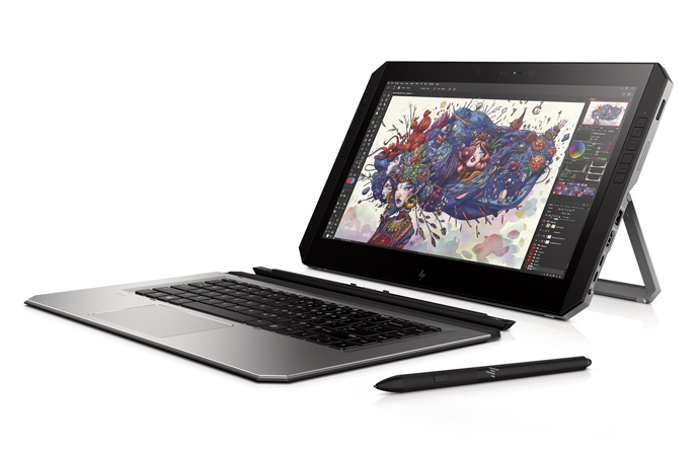
The HP ZBook x2 was HP’s first 2-in-1 mobile workstation. Unlike Dell’s 2-in-1, it’s essentially a tablet with a detachable keyboard. In tablet mode, this makes it thinner (14.6mm), but even though it has a 14-inch display, rather than a 15.6-inch, it’s not that much smaller. This is because it has two sets of customisable ‘Quick Keys’ on either side of the display.
The Quick Keys are great for productivity, as they can be programmed to do tasks usually done by a mouse and keyboard, but they also give more room to grip the tablet off-screen.
The downside of this tablet-first design is the kickstand, which means the ZBook x 2 is not as stable in laptop mode. It also has a low-power CPU, so expect reduced rendering performance, and the GPU — an Nvidia Quadro M620 — is not as powerful.
The HP ZBook x360

The HP ZBook x360 is very similar to the Dell Precision 5530 2-in-1, in that it’s a laptop with 360-degree hinge, where the screen folds back on itself to go into tablet mode.
It’s not a thin as the Dell and it’s slightly larger and heavier, but it is more powerful. It comes with a choice of quad- or six-core CPUs, including the top-end Intel Xeon E 2186M (2.90GHz base, 4.80GHz Turbo) so it promises better performance in both single-threaded (CAD) and multi-threaded (ray trace rendering) workflows.
The performance of the GPU, an Nvidia Quadro P1000, is likely to be fairly similar to the Dell Precision 5530 2-in-1’s AMD Radeon Pro WX Vega M GL.
With two DIMM slots, the ZBook Studio x360 is available now with 32GB of DDR4 ECC SDRAM and 4TB of PCIe storage spread across two NVMe SSDs.
Laptop alternatives slimline mobile workstations
The Dell Precision 5530
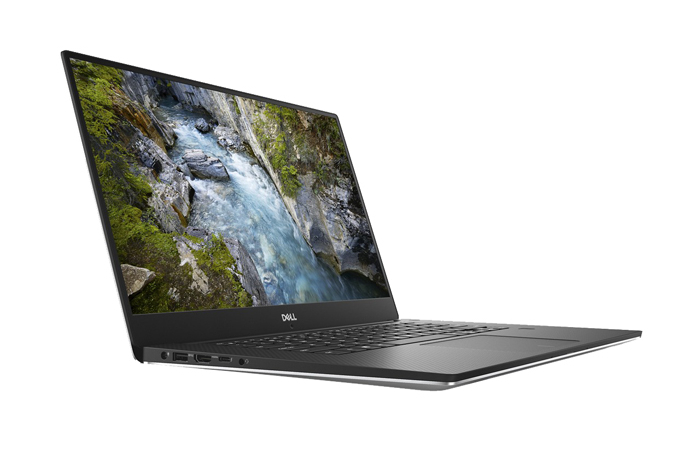
It has a separate CPU and GPU and more processing power all round. For the CPU, there’s a choice of quad- or six-core models. The top-end Intel Core i9-8950HK not only has six cores for significantly faster rendering, but also a Turbo of 4.8GHz, so it will be faster in single-threaded CAD applications.
With the option of the more powerful Nvidia Quadro P2000 GPU (4GB GDDR5), it’s also better suited to real-time viz. Finally, it supports both NVMe SSD and 2.5-inch HDD, a combination that gives good performance and a lower cost per GB.
The HP ZBook Studio G5

The HP ZBook Studio G5 has very similar specs to the Dell Precision 5530 – a massive choice of quad-core or six-core CPUs, as well as the powerful Nvidia Quadro P2000 graphics.
HP has put a lot of work into security, with several features including one that protects the BIOS and another that stops the antivirus being turned off in an attack. There’s also a tool to help non-experts reimage the system on the go and a container for web browsing that will stop the rest of the machine getting infected if an insecure website is visited.
Finally, HP Sure View is a special display technology that dramatically narrows the viewing angle so prying eyes can’t see the screen.
The PNY PrevailPro P4000
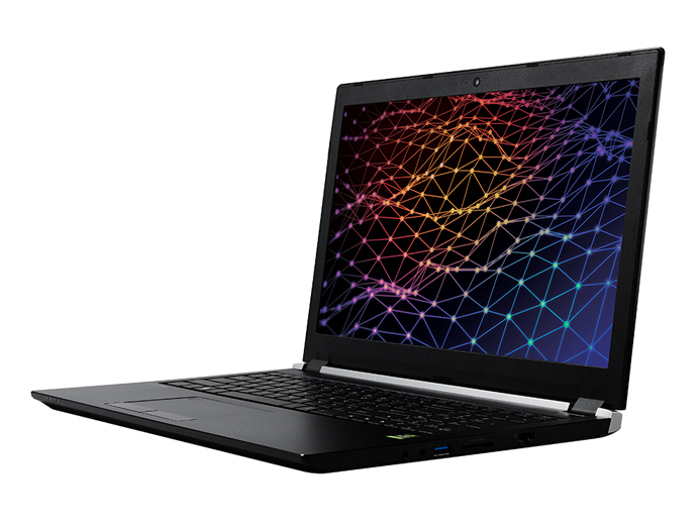
The PNY PrevailPro P4000 stands out from the competition because it has a much more powerful GPU. The Quadro P4000 will not only deliver much better performance for real-time viz or GPU rendering, but can also drive a VR headset.
The Intel Core i7-7700HQ CPU is one generation behind the HP ZBook Studio G5 and Dell Precision 5530. It’s quad-core with a base frequency of 2.8GHz and a Turbo of 3.8GHz, so you won’t get as good performance in CAD or when rendering. The build quality is also not as good as others, but if you want a really portable mobile workstation with very fast graphics, then it’s hard to beat.
If you enjoyed this article, subscribe to our email newsletter or print / PDF magazine for FREE

